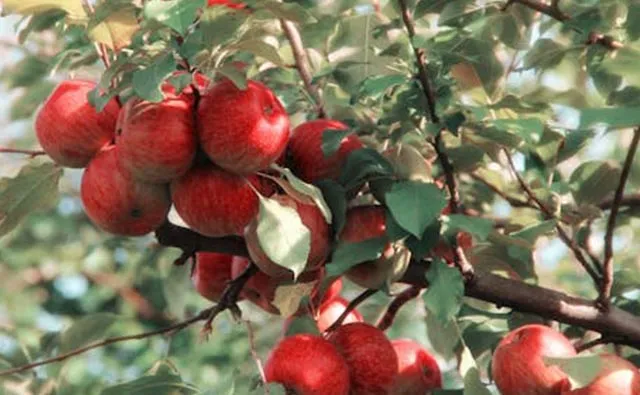Industry News, Agriculture & Feed, Adjuvants
Adjuvants: A Powerful Problem-Solver

Industry News, Agriculture & Feed, Adjuvants

North America is at the forefront of adjuvant use, driven by technological advancements and a flourishing focus on sustainable agricultural practices. Regulations emphasizing reduced chemical usage are further elevating adjuvants in enhancing pesticide and herbicide effectiveness.
“Anything a grower is doing in the field, there’s an adjuvant that they’re using,” says Eileen Bernard, Adjuvants Manager for Nutrien Ag Solutions, parent company of input producer Loveland Products. “Ultimately, we say adjuvants are problem-solvers that work against all the factors that are working against you.”
Adjuvants are supplemental substances aimed at boosting a chemical’s performance or physical properties when added to a spray mixture. Yet, farmers are wise to understand their specific functions — a suite of applications that encompass dispersing, spreading, sticking, wetting and emulsifying.
While there is no single catch-all adjuvant, combining different products in a spray tank should give users the desired effect, says Bernard. Using the correct adjuvant can decrease or even eliminate common plant treatment problems — a typical “activator adjuvant,” for example, reduces leaf surface tension to aid in chemical absorption.
“Growers can save money by selecting one adjuvant that provides multiple functions, works in multiple applications on multiple crops, and contains the required EPA approvals and CPDA (Council of Producers and Distributors of Agrotechnology) certification,” says Darrin Quern, President of the Atlantic-Pacific Agricultural Co. “You may not find one adjuvant that meets all label requirements, but reducing the number of adjuvants you have on hand will save you time, space, and money.”
The adjuvant market is comprised largely of formulation and spray products. Formulation adjuvants are added to pesticides as inert ingredients during the manufacturing process. Spray adjuvants, meanwhile, are standalone substances added to a tank mix by the user.
Spray adjuvants’ strong functionality make them an excellent add-on to formulation adjuvants, Quern says. Multi-functional products like Hook Zero — an aerial solution from Atlantic-Pacific — will also gain popularity apace with the prevalence of spray drones in pesticide applications, he adds.
“Although the drone market remains small, growers recognize huge benefits that include lower fuel cost, lower labor requirements, improved safety and reduced crop damage,” says Quern. “Aerial adjuvants are critical in optimizing the performance of spray drones and should be used by operators in every tank mix.”
Adjuvants are further divided into activator and special-purpose categories. Activator products, designed to improve pesticide activity, incorporate surfactants, oils, and nitrogen-based fertilizers. Surfactants alone can change the physical properties of a spray solution, upgrading a droplet’s ability to remain in contact with the leaf surface.
Loveland adjuvant formulations work alongside specific agricultural chemicals, notes company official Bernard. To that end, the producer’s Missile adjuvant targets Enlist 2,4-D mixes, ensuring the Corteva-brand herbicide both lands on plants and stays there.
“It comes down to improved efficacy, and extending the window of getting a chemical out into the field,” Nutrien’s Bernard says. “If there’s a fix that can be bolted onto a problem, adjuvants are uniquely positioned to solve that issue.”
Precision farming techniques such as aerial spraying, variable rate application and smart irrigation are gaining traction worldwide. Agriculture adjuvants are built to optimize the performance of these techniques, says Austin Anderson, Adjuvant Brand Manager at Helena Agri-Enterprises.
“Think about it on the macro scale,” Anderson says. “For growers, it’s about getting the most out of their applications, and adjuvants are a key component of that. That’s how we bring products to market.”
Helena’s robust portfolio includes drift reduction aid Oculus Maxx, which enhances the effectiveness of auxin herbicides and other chemical types. Additional defoaming and compatibility agents work to mitigate the various conditions that can negatively impact a spray solution.
“Time is a limiting factor, and the most expensive application is one that doesn’t work,” Anderson says. “We’re always innovating and looking for the next best thing. Market drivers are about pesticide enhancement. How can we make a glyphosate work better in an environment with increased resistance?”
Heightened attention on environmental sustainability has propelled the development of biodegradable formulations that align with eco-conscious farming practices. This trend also dovetails with new protections for endangered species that has ag companies taking a close look at products that may threaten animals, insects, or natural habitats, says Loveland’s Bernard.
“Adjuvants fit well into sustainability programs, because spraying right the first time means you’re reducing the amount of pesticide that’s going out,” says Bernard. “Anything that shows our products are performing is a good sustainability play.”
Loveland directly consults farmers on incorporating adjuvants in their crop protection rotation — a vital education as more products are introduced into the market, Bernard says.
“Adjuvants have been around for a long time, although in the 1970s there were only three recommended products, where now there are thousands,” she says. “As the industry matures, there are going to be more products and active ingredients that people are not aware of. Education is the biggest opportunity for us.”
Helena has increased its presence at trade shows, further bolstering its instructional offerings via emails, direct mailers and boots on the ground, says Atlantic-Pacific Ag’s Quern.
“We have to be sure our product offerings remain relevant to the introduction of new technologies, new products and expanded grower needs,” Quern says. “It’s important that we continue to develop products that increase crop performance and help maximize profitability for farmers.”